 |
| © Beth Surdut 2017 For NPR audio, visit Arizona Public Media |
Hurricanes
Soon after I moved to Sarasota, Florida in January 2005, months
before hurricane season, I was welcomed into a writing group an hour
south, in Punta Gorda. In August of 2004, Hurricane Charley had swirled
and crushed and ripped through there so fiercely, that parts of town
looked liked there'd been a war. Sitting around under the stars, poets and songwriters offered me moonshine and story after story about surviving Charley--sort of. When you watch your house blow away, when you take cover in the bathroom with your kid and your dog as your roof rips off, what remains is PTSD.
I said, "I just moved here. Should I turn tail and run now?"
They chuckled and someone said, "Nah. But you should move down here with us and when the time comes, we'll tell you which way to run."
Except the fierceness can change course in an instant and you might be running right into danger, not away from it. So you hear "hunker down" a lot.
I am not, by nature and design, a worrier, but the uncertainty of hurricane season -- the planning, second-guessing, preparation, and knowledge that it could be all for nought -- is like a festering tiny splinter that you'll never quite dig out.
But let me tell you about the river…
The Subtlety of Gators
"Don't be scared," said the guide in the boat next to me as the alligator lunged towards my kayak.
"I'm not scared," I whispered, looking down at the huge prehistoric head right next to my hip. "I'm petrified."
I watched the gator swim past, gliding parallel to my little red tub toy of a boat.
 |
| (PHOTO: Larry Baker) |
Um, yeah, me, too.
That was my first time paddling on the river, and I was hooked.
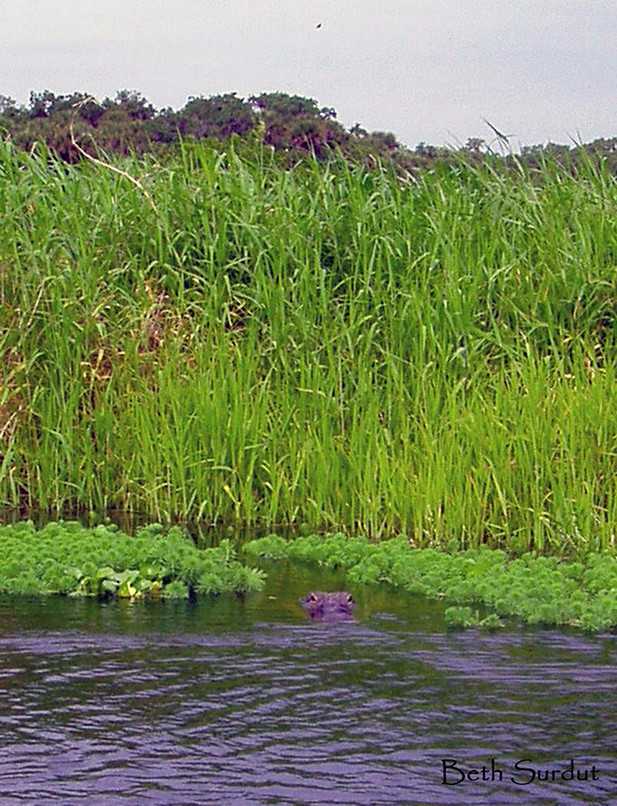
It was one of my newly met paddling buddies. My behavior on the river--shock masquerading as serenity--earned me a new moniker.
That first time stretched into three years paddling the Myakka, a place that never disappointed, always enchanted. Herons abound--Great Blues, Whites, Tri-colored, Green; heavy-bodied wood storks whose wings whoosh loudly as they loft; goofy and gorgeous pink roseate spoonbills swishing their spatulate bills in the water; bold ospreys who would swoop down right in front of my boat, and rise up with a fish grasped in their talons; anhingas, also great fishers, standing on branches drying their outstretched wings. And more species of birds than I can count.
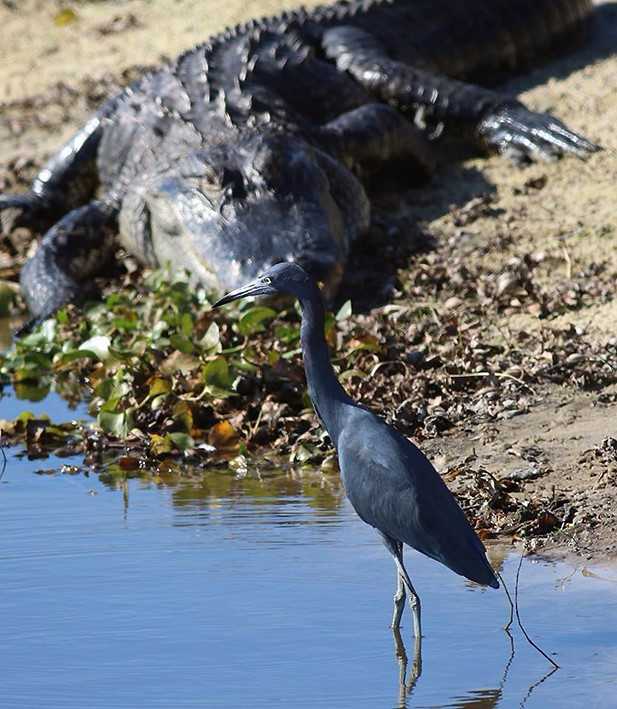 |
| (PHOTO: Larry Baker) |
I have seen the spectrum of life—pop-eyed baby gators with stripes still visible on their tails, and once, a 12-foot gator corpse feasted upon by black vultures.
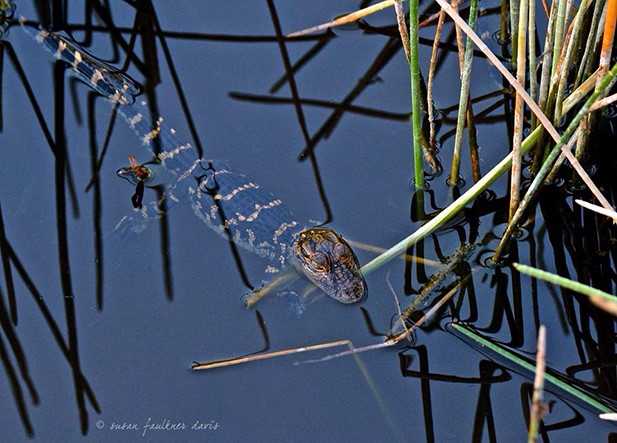 |
| (PHOTO: Susan Faulkner Davis) |
They usually amuse me with their hopping, "dum-de-dum, de-dum-de dum"
gait, but watching them feed is a dark story that whispers fear around a
campfire.
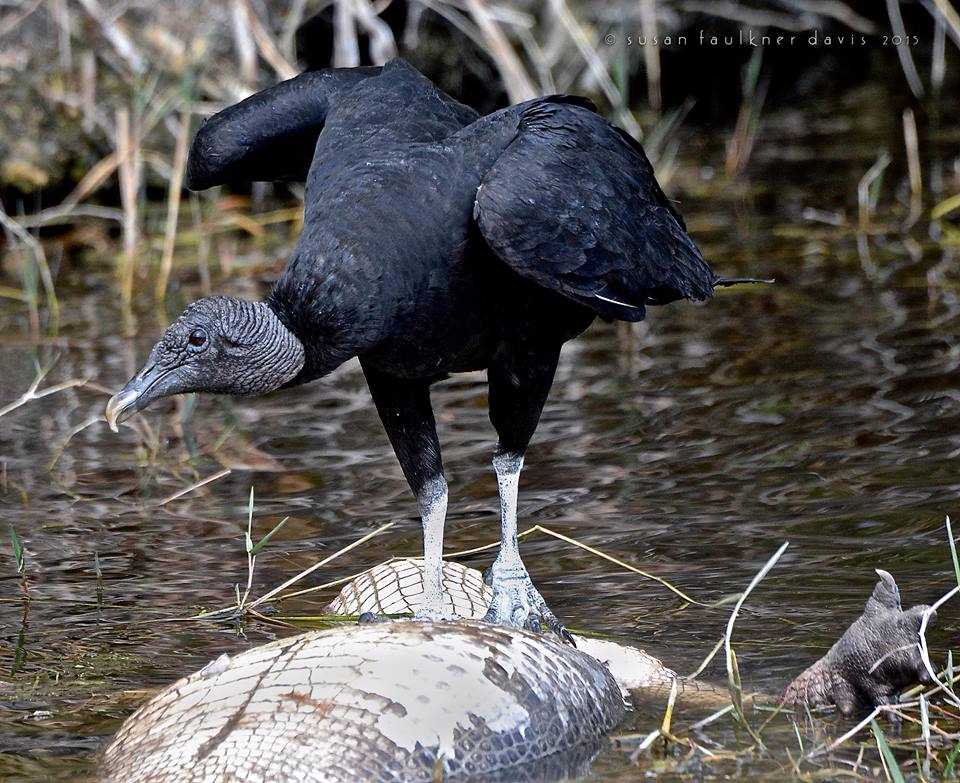 |
| (PHOTO: Susan Faulkner Davis) |
A curious young gator, maybe four feet long, leaves the shore and swims quickly towards our canoe, his tail snaking through the water. In rare moments of clarity, the dappled sun lights his movements just under the surface. Soon as he's close enough to figure out what we are, he swims parallel to the boat.
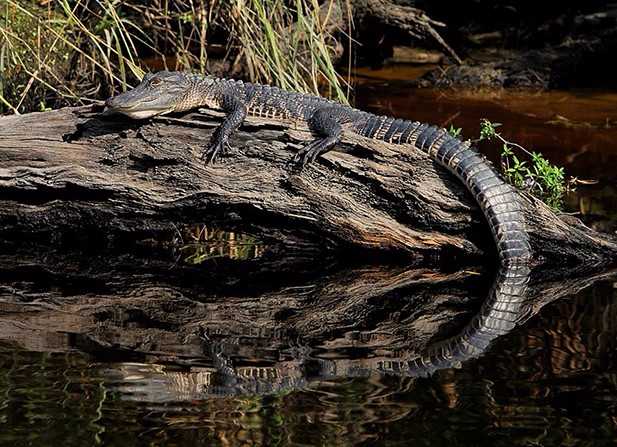 |
| (PHOTO: Larry Baker) |
There’s one man standing--well, sort of swaying--in thigh-deep water, his white skin glowing in the tannin-dense river. One hand is conducting with a cigarette, and he's using the beer in the other hand as ballast.
“There’s a gator heading in your direction,” I call to him, and the idiot, showing off for his beer-can buddies in their boat, yells, “Great! I’ll go meet it!” and dives under water.
I ply the paddle deep and fast, saying to my companion, “This could be a Darwin Award moment and I don’t want to see it. Just keep paddling.” Far be it from me to get in the way of that guy's personal freedom.
I didn’t hear any screams, so I guess the idiot and the gator survived.
 |
| (PHOTO: Larry Baker) |
The sad reality is that an alligator not only comes to associate humans with food, but doesn’t distinguish between the food and the hand that holds it. Potentially, you’re just one big snack, bubba.
If a gator grabs a human, even if it’s the human’s fault, the alligator is removed—that means killed.
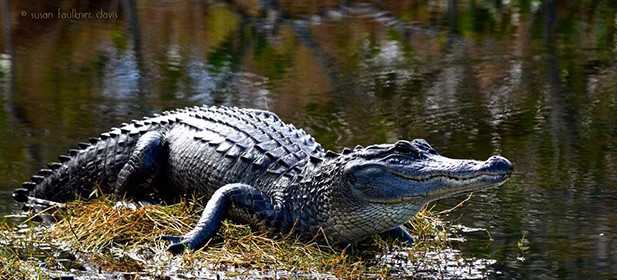 |
| (PHOTO: Susan Faulkner Davis) |
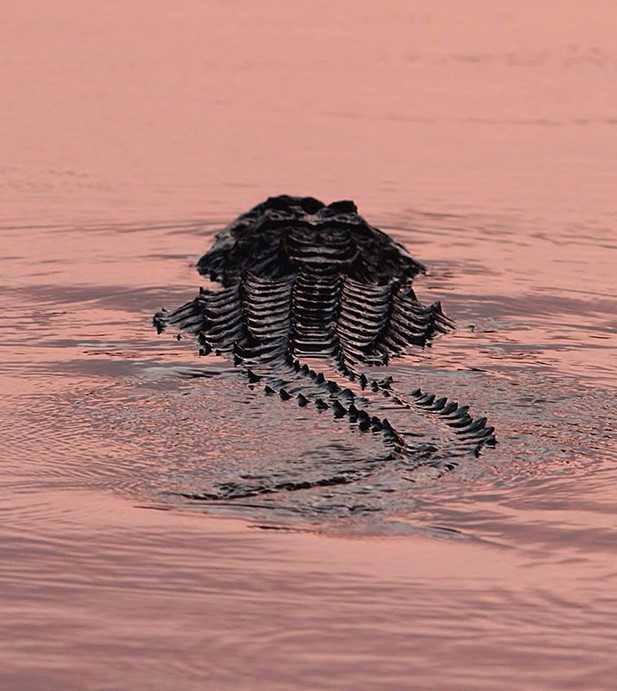 |
| (PHOTO: Larry Baker) |








No comments:
Post a Comment